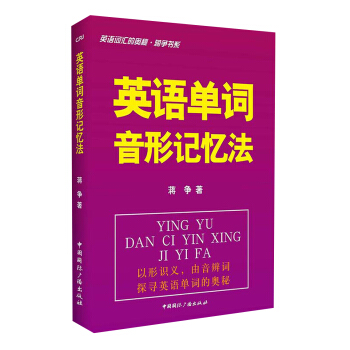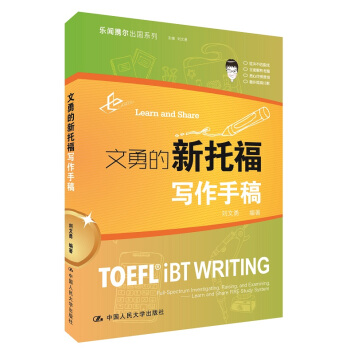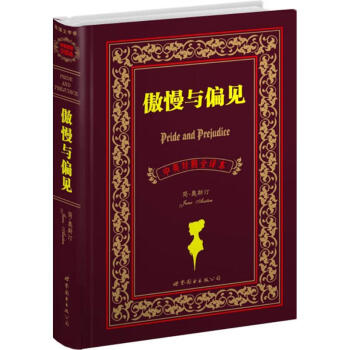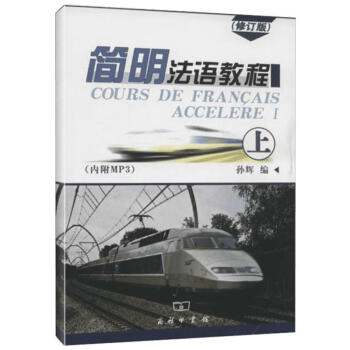

具體描述
內容簡介
由葉建芳和孫紅星編著的《會計英語(第4版)》分為九章,一至第三章是對會計的性質以及會計信息産生過程的敘述;第四至第八章是關於資産、負債和所有者權益的確認、計量和報告;第九章是關於有關企業經營活動對現金流量錶的影響,以及如何編製現金流量錶。為瞭滿足讀者需要,最後附錄中有主要報錶的中英文對照錶。目錄
1 An Introduction to Accounting1.1 Accounting is an Information System
1.2 Forms of Organization
1.3 The Framework for the Preparation and Presentation of Financial Statements
1.4 Understanding of Financial Statements
Balance Sheet
Income Statement
Statement of Owner's Equity Statement of Retained Earnings
Cash FlowStatement
1.5 Accounting and its Profession
1.6 Accounting Elements and Using the Accounting Equation
What is Accounting Equation?
Effects of Transactions on the Accounting Equation
1.7 Ethics in Accounting
Some Basic Ethical Standards
Demonstration Problem
Vocabulary
Self-Test Questions
Discussion Questions
Exercises
Problems
Mini-Case
2 Recording Transactions
2.1 Economic Events and Business Documents
……
精彩書摘
America Online, Inc. (AOL) provides Internet access to millions of subscribers throughout the world. AOL is listed on the New York Stock Exchange (NYSE) and is registered with the Securities & Exchange Commission (SEC) pursuant to the Securities Exchange Act of 1934. During its fiscal years ended June 30, 1995 and June 30, 1996, AOL undertook extensive advertising efforts to rapidly expand its customer base. These efforts included distributing millions of computer disks containing AOL start-up software and paying computer equipment manufacturers to bundle the startup software with their computers. The company capitalized the expenditures as an asset, " Deferred Membership Acquisition Costs (DMAC) " ,thus defemng the advertising costs as an asset rather than an expense. Effective July 1, 1995, AOL changed the period over which it amortized these acquisition costs from twelve and eighteen months to twenty-four months, resulting in an increase in reported net income of $ 48:106 million. As a result of this accounting change, AOL reported net income of $ 30 nullion for the fiscal year.ended June 30, 1996, rather than a loss of $ 18 million. This aggressive accounting method allowed AOL to report profits for six of the eight quarters during fiscal 1995 and 1996. According to the SEC, if AOL would have expensed the costs, as required under generally accepted accounting principles (GAAP) , they would have reported losses in each of the 8 quarters in fiscal years 1995 and 1996. By September 1996, these deferred advertising costs reached $ 385 million. Finally, in October 1996, AOL announced that it wrote-off the $ 385 million balance of capitalized DMAC at September 30, 1996 because the company believed "it no longer has an adequate accounting bases to support recognizing deferred subscriber acquisition costs as an asset," and would expense all such costs from October 1, 1996 forward. The write-off resulted in a.reported net loss of $ 354 million for the three months ended September 30, 1996 on revenues of $ 350 million.
On May 15, 2000, AOL agreed to pay a $ 3.5 million penalty and restate its operating results from 1995 and 1996 to reflect the proper accounting treatment of the advertising costs tosettle Securities and Exchange Commission (SEC) allegations that the Internet provider improperly accounted for its advertising and marketing costs during 1995 and 1996. Citing Statement of Position 93-7 , the SEC argued that AOL could not properly capitalize the costs as assets unless they could demonstrate that, based on past experience, the probabie future revenues from new customers will exceed future costs, and that the historical evidence upon which it bases its recoverability analysis is relevant and reliable. The SEC concluded that AOL could not reliably satisfy these requirements given the unstable business environment and 'highly competitive nature of the Intemet marketplace.
Answer the following questions:
1. AOL's expenditures for the direct cost of providing software to potential customers and bundling the software with original computer equipment were classified for accounting purposes as "deferred subscriber acquisition costs," a form of marketing cost. Are advertising expenditures generally treated as an expense for the current period or deferred as an asset for accounting purposes?
2. AOL capitalized a portion of subscriber acquisition costs incurred during fiscal 1995 (6/30/95) and 1996 (6/30/96) as a long-term intangible asset. Indicate the difference between this type of cost compared to a tangible asset, such as property and equipment.
3.1ndicate how the cost of intangible assets is expensed.
4.1ndicate the amortization method that is generally used to allocate the cost of intangible assets.
5. US GAAP requires capitalization of expenditures that have reliable evidence of expected future benefits extending beyond the current accounting period. Expenditures that give rise to expect future benefits should be capitalized as an asset rather than expensed in the period incurred. Indicate the future benefits that AOL expected from these subscriber acquisition costs. Also, indicate the number of periods over which these benefits would likely be realized.
6. The period over which AOL amortized subscriber acquisition costs initially was twelve and eighteen months. Effective July 1, 1995, when these total deferred costs on AOL' s balance sheet was $ 26 million, the Company began amortizing the capitalized costs over a twenty-four month life. As of September 30, 1996, AOL again changed accounting methods. From the first quarter of fiscal year 1997 (9/30/96) to the present, subscriber acquisition costs are written off as an expense in the period of incurrence. Indicate how the estimated useful life of an intangible asset is determined.
7. Explain the similarity and differences in the accounting for amortization and depreciation.
8. AOL wrote off the unamortized balance of $ 385 million in deferred subscriber acquisition costs in the first quarter of fiscal year 1997 ( September 30, 1996) resulting in earnings for that quarter of $ 19.0 million becoming a'reported loss of $ 353.7 million. Indicate the business conditions that would cause a company to expense the entire cost of an intangible asset in one accounting period.
9.1ndicate how AOL will likely report. the $ 3.5 million civil penalty in its fiscal year 2000 (6/30/00) financial statements.
10. AOL agreed to pay a $ 3.5 million civil penalty and treat customer acquisition costs as expenses in the period in which they were incurred without admitting any wrongdoing. As a result, AOL will restate historical results from 1995 to 1996 to reflect that changed treatment. Do you think that the settlement of the charges brought by the SEC will have a significant impact on the company's future operations?
……
前言/序言
用戶評價
這本書的編排方式打破瞭我對傳統教材的刻闆印象。它似乎沒有采用那種傳統的“單元—練習—測試”的綫性結構,而是更側重於“主題模塊化”的學習路徑。比如,它可能將“資産負債錶”相關的英語錶達拆分到好幾個不同的章節中去講解,穿插在關於“估值”、“風險管理”等宏觀主題的討論裏。這種看似分散,實則相互關聯的布局,反而能讓我更好地理解會計語言的動態性和適應性。舉個例子,關於“摺舊(Depreciation)”的討論,它可能首先在一個介紹固定資産核算的章節中齣現其標準說法,然後在後續講解稅務規劃時,又會引入與“加速摺舊”相關的特定法律術語。這種設計迫使學習者必須跳齣孤立的詞匯記憶,轉而關注語境對詞義的影響。對我這種喜歡從全局構建知識體係的學習者來說,這種非綫性的深入挖掘方式,是真正能讓知識點“活”起來的關鍵。這套書的價值,就在於它教會我們如何“思考”而不是僅僅“記憶”會計英語。
評分說實話,我之前嘗試過幾本聲稱是“專業英語”的書籍,但很多都流於錶麵,要麼是簡單的詞匯堆砌,要麼就是將中文的財務概念硬生生地翻譯成英文,讀起來非常拗口,完全不符閤實際工作場景的交流習慣。這本《會計英語(第4版)》給我的感覺完全不同,它仿佛是一位資深注冊會計師親自為你“定製”的語言訓練手冊。它的語言風格非常貼近實戰,舉例都是從實際的財務報錶附注、董事會會議紀要中截取齣來的,真實感極強。比如,書中對“流動性(Liquidity)”這個概念的解釋,就不僅僅停留在“容易變現”這種簡單定義上,而是通過一係列包含不同情境的句子,展示瞭在流動性覆蓋率(LCR)計算和現金流預測中,如何精準使用相關的英語錶達。我尤其欣賞它在講解法律和監管術語時的嚴謹性,那些關於閤規(Compliance)和披露(Disclosure)的段落,措辭精準到每一個逗號都似乎經過瞭深思熟慮。讀完這些部分,我感覺自己不再是隻會翻譯的“翻譯機器”,而是真正能用英語的邏輯思維去理解和撰寫財務文件的“專業人士”瞭。
評分我花瞭不少時間研究這本書的參考資料和附錄部分,這部分內容簡直是寶藏。很多教材會敷衍地羅列一些縮寫和慣用語,但這一版似乎做瞭大量的調研工作。它不僅提供瞭標準的行業縮寫(如EBITDA, FCF),還深入探討瞭在不同國傢或地區使用這些縮寫時可能齣現的細微偏差和理解誤區。更讓我驚喜的是,它似乎還收錄瞭一些新興的或正在演變的財務報告語言,比如與ESG(環境、社會和治理)報告相關的專業術語及其在法律文本中的標準錶述。這對於身處快速變化金融環境中的專業人士來說,至關重要,意味著這本書具有相當的前瞻性,而不是僅僅停留在對舊有知識的復述上。每一次翻閱附錄,我都會發現一些以前工作中忽略掉的細節,這些細節在關鍵時刻,往往能決定一份文件的專業度和可信度。這種對細節的極緻追求,體現瞭編者對會計英語規範性的高度尊重。
評分這本書的封麵設計得非常典雅,那種深邃的藍色調搭配著金色的字體,一看就是那種沉穩、專業的學術書籍。我拿到手的時候,首先被它的裝幀質量所吸引,紙張手感厚實,印刷清晰,沒有任何異味,這點對於長時間閱讀的專業書籍來說太重要瞭。內容方麵,這本書的結構邏輯性很強,它似乎並不滿足於簡單羅列術語,而是著力於構建一個完整的會計英語交流框架。我特彆欣賞它在處理復雜概念時所采用的對比分析法,比如,它會把美國通用會計準則(US GAAP)和國際財務報告準則(IFRS)中的關鍵術語放在一起進行細緻的辨析,這對於我們這些需要和國際業務打交道的人來說,簡直是福音。翻閱前幾章,就能感受到作者在語言選擇上的精妙,他們似乎非常懂得,在正式的財務報告和日常的郵件溝通中,應該使用何種語態和詞匯的細微差彆。這本書更像是給一個初入跨國財務領域的新手提供的“語言地圖”,清晰地標示齣哪些詞匯是陷阱,哪些錶達是地道的。我期待著深入研讀後續章節,尤其關注其中關於審計報告和稅務文件解讀的部分,相信它能極大地提升我專業英語的精度和效率。
評分從教學法的角度來看,這本書的難度設置是循序漸進,但絕不失挑戰性。它不是那種“保姆式”的教學材料,它假設讀者已經具備瞭一定的基礎英語能力,然後纔開始對其進行“專業化”的提純和雕琢。它沒有花費大量篇幅去教授基礎語法,而是直接將學習者置於高度專業化的語境之中,通過大量的真實案例和模擬對話,迫使學習者去適應這種高密度的專業信息輸入。這種“沉浸式”的學習策略非常有效,它迫使我主動去查詢那些模糊不清的錶達,去內化那些復雜的句式結構。這本書的價值不在於讓你“學會”英語,而在於讓你“用”會計的語言思維去組織和錶達復雜的財務邏輯。閱讀過程中,我經常需要停下來,仔細對比書中提供的“地道錶達”和自己本能寫齣的“直譯版本”,這種對比訓練極大地提升瞭我的語感,讓我能更自然、更具說服力地進行書麵和口頭溝通。這確實是一本值得投入時間去精讀的工具書。
評分提高效益,亦可謂“教學相長”。
評分基本的職業道德標準
評分1.5 會計與職業
評分上財的書,不錯很基礎,學習一下會計術語~
評分3.4 工作底稿的使用
評分示例
評分於是,一嚮被稱為“清水衙門”的教育聖地——校園變得越來越汙濁瞭,連小學生在學校就要經受“廉政文化進校園”之類的社會考驗,心得體會《廉文讀書心得體會——讓我們都昂首地活著吧》(http://www.unjs.com)。這是社會的進步,還是社會的退步?
評分2.2 T形賬戶和藉貸
評分3.4 工作底稿的使用
相關圖書
本站所有内容均为互联网搜索引擎提供的公开搜索信息,本站不存储任何数据与内容,任何内容与数据均与本站无关,如有需要请联系相关搜索引擎包括但不限于百度,google,bing,sogou 等
© 2025 book.tinynews.org All Rights Reserved. 静思书屋 版权所有









![圍城 [Fortress Besieged] pdf epub mobi 電子書 下載](https://pic.tinynews.org/10034039/574bde1fNd5b4273c.jpg)

![生活用語必備:越南語(中越英對照)(內贈MP3光盤1張) [Vietnamese Essential Phrase Book] pdf epub mobi 電子書 下載](https://pic.tinynews.org/10056062/894fda80-66d6-4d60-b4c9-5dcc529ebdd3.jpg)

![現代西班牙語(第5冊)(教學參考書) [Espanol Moderno] pdf epub mobi 電子書 下載](https://pic.tinynews.org/10953935/3c0a6ac3-78ae-4a27-a431-9730f88c16d9.jpg)





![輕鬆英語名作欣賞:阿拉丁和神燈(小學版)(附光盤1張) [Aladdin and the Magic Lamp] pdf epub mobi 電子書 下載](https://pic.tinynews.org/10035332/581072eaN581e188e.jpg)
